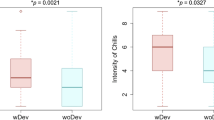Abstract
The paper presents an ongoing research project that aims to help individuals with mild psychological disorders, like depression, to reduce the use of medication and escape a possible addiction to drugs by transforming their immediate or broader living space into a sensponsive environment. It is an innovative, multidisciplinary, non-invasive approach through the domains of architecture, computer science, psychology and endocrinology. Initially, the paper presents the connections between space and human behavior, and specifically, the ways in which the spatial qualities of the surrounding environment affect the human senses and consequently the hormonal changes and the production of the corresponding emotions and actions. As a next step, the paper outlines the creation of sensponsive environments that are programmed to sense human discomfort by monitoring changes in facial expression and body movement and respond to them accordingly by transforming their spatial elements in order to make people feel better. The proposed sensponsive spaces are equipped with biomedical monitoring systems, smart materials and sensor–actuator assemblies with programmed re-actions (haptic, olfactory, chromatic and so on) that help people refine their feeling of the surrounding space, guiding its smooth transition to a comfortable—for the body and the mind-place. The paper concludes with the next step of this research initiative, the sensponsive suit, a personalized wearable assembly enhanced with technology to positively affect the psychological health of the wearer.



Similar content being viewed by others
References
Cardinali DP (1998) The human body circadian: how the biologic clock influences sleep and emotion? Neuroendocrinol Lett 21:9–15. Available from http://www.ncbi.nlm.nih.gov/pubmed/11455328
Citizens Commission on Human Rights International (2011) Quick facts about psychiatry. Retrieved 06 Mar 2011 from http://www.cchr.org/quick-facts/introduction.html
Cohn J, Kanade T (2006) Use of automated facial image analysis for measurement of emotion expression. In: Coan JA, Allen JB (eds) Handbook of emotion elicitation and assessment. Oxford University Press, Oxford, pp 222–238
National Institute of Mental Health (2010) Depression. Retrieved 14 Jan 2010 from http://www.nimh.nih.gov/health/topics/depression/index.shtml
Neave N (2008) Hormones and behavior. A psychological approach. Cambridge University Press, Cambridge
Oungrinis KA (2009) Structural morphology and kinetic structures for transformable spaces. Doctoral dissertation. Available from http://phdtheses.ekt.gr/eadd/handle/10442/20631
Sommer R (2008) Personal space. The behavioral basis of design. Bosko Books, Bristol
Vander MD, Sherman J, Luciano D, Tsakopoulos M (2001) Physiology of the human. Medical Publications Pasxalidis, Athens
Whitaker R (2005) Anatomy of an epidemic: psychiatric drugs and the astonishing rise of mental illness in America. Ethical Hum Psychol Psychiatry 7(1):23–35. Retrieved from http://psychrights.org/articles/ehpppsychdrugepidemic(whitaker).pdf
Acknowledgments
The technical specifications for the materialization of the proposed sensponsive system have been structured with the invaluable help of Konstantinos-Alketas Oungrinis, Asst. Professor, and Dimitris Mairopoulos, student, at the TUC Department of Architecture.
Conflict of interest
This supplement was not sponsored by outside commercial interests. It was funded entirely by ECONA, Via dei Marsi, 78, 00185 Roma, Italy.
Author information
Authors and Affiliations
Corresponding author
Rights and permissions
About this article
Cite this article
Liapi, M., Linaraki, D. & Voradaki, G. Sensponsive architecture as a tool to stimulate the senses and alleviate the psychological disorders of an individual. Cogn Process 13 (Suppl 1), 233–237 (2012). https://doi.org/10.1007/s10339-012-0454-z
Published:
Issue Date:
DOI: https://doi.org/10.1007/s10339-012-0454-z




